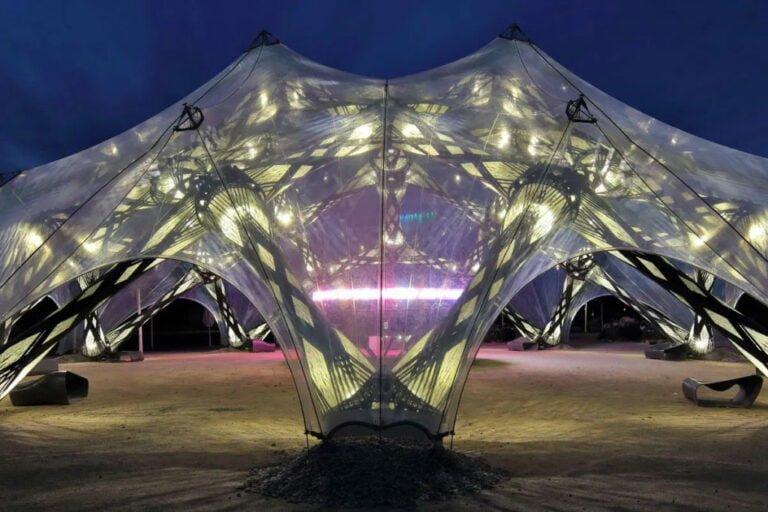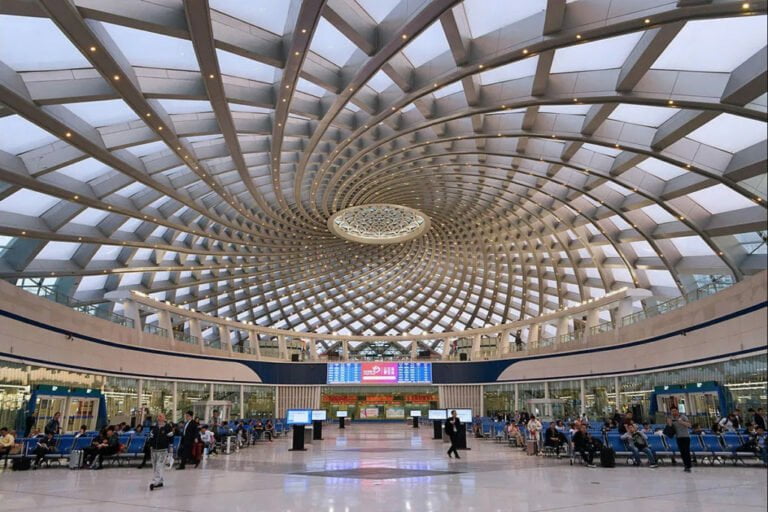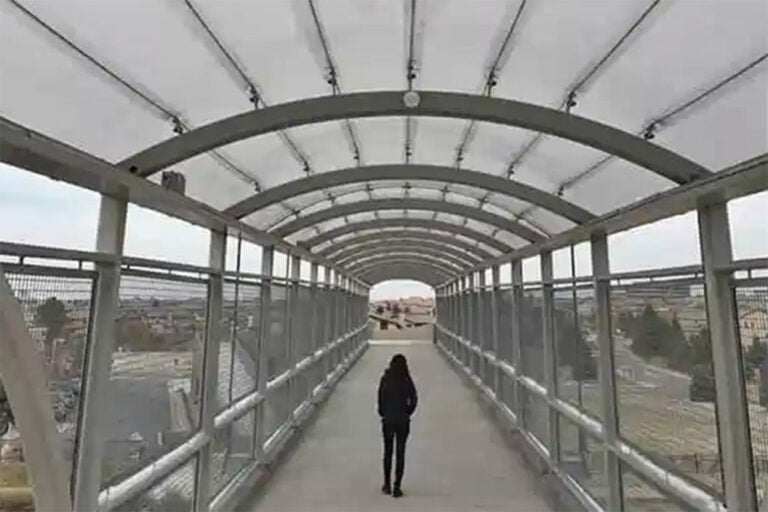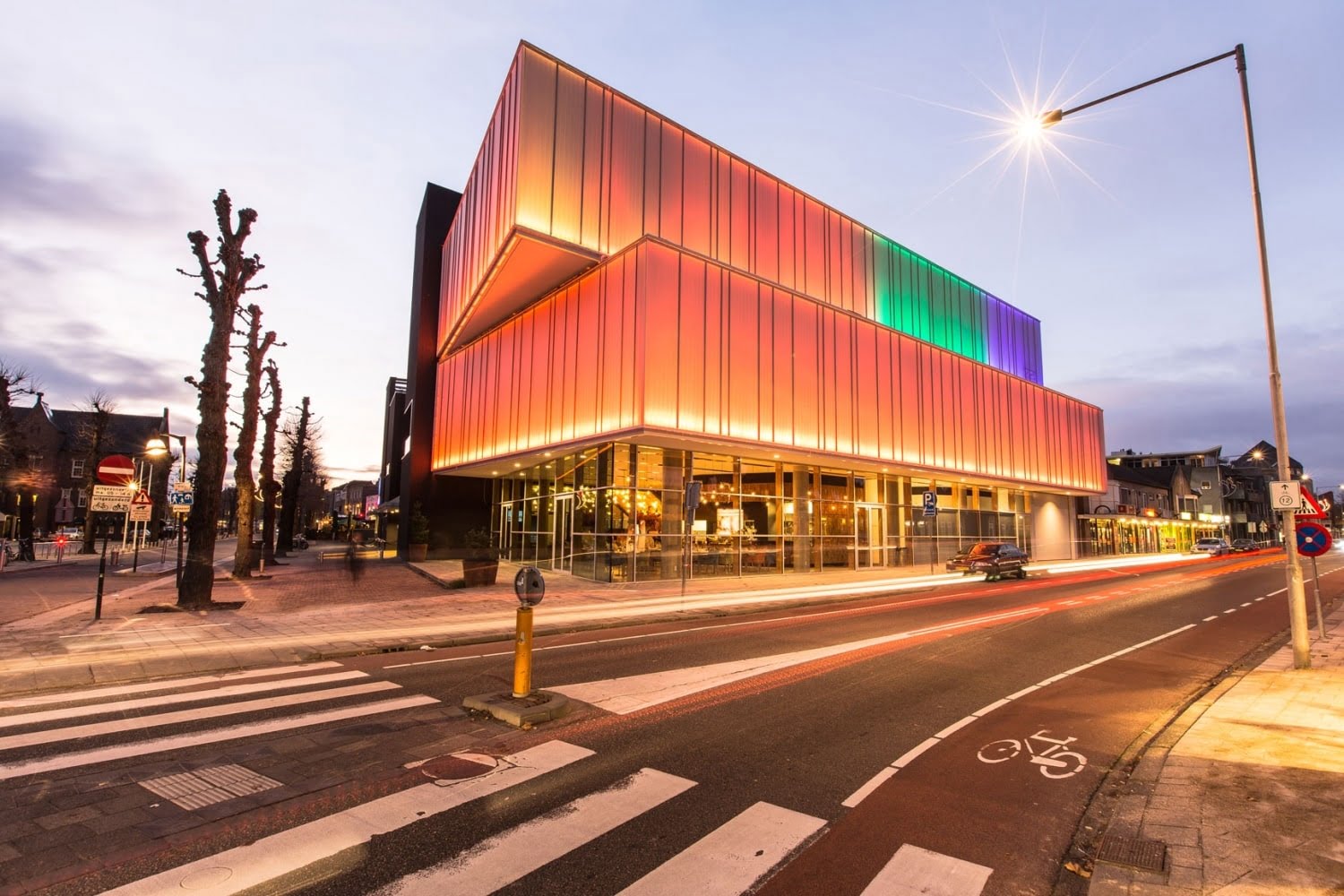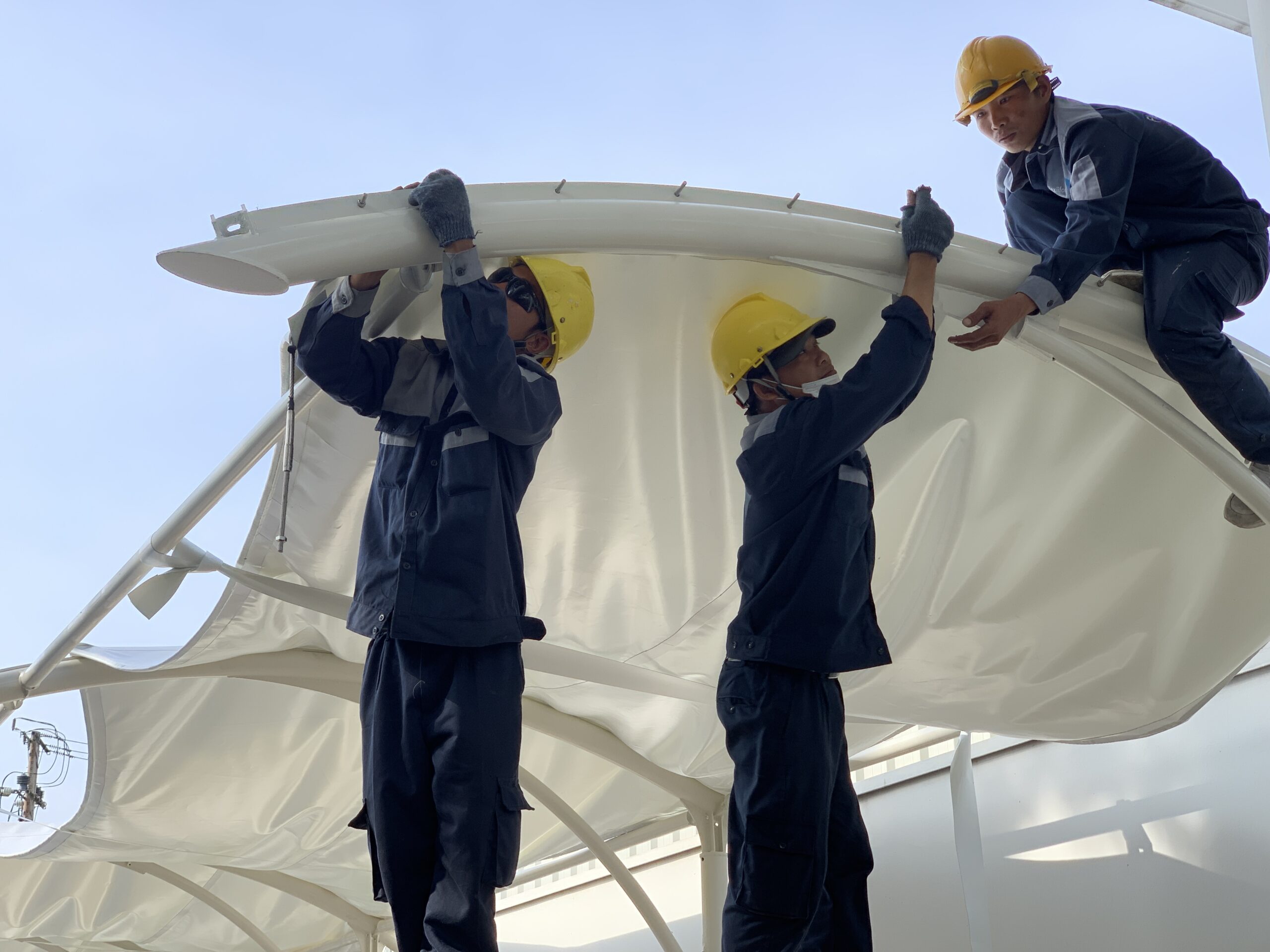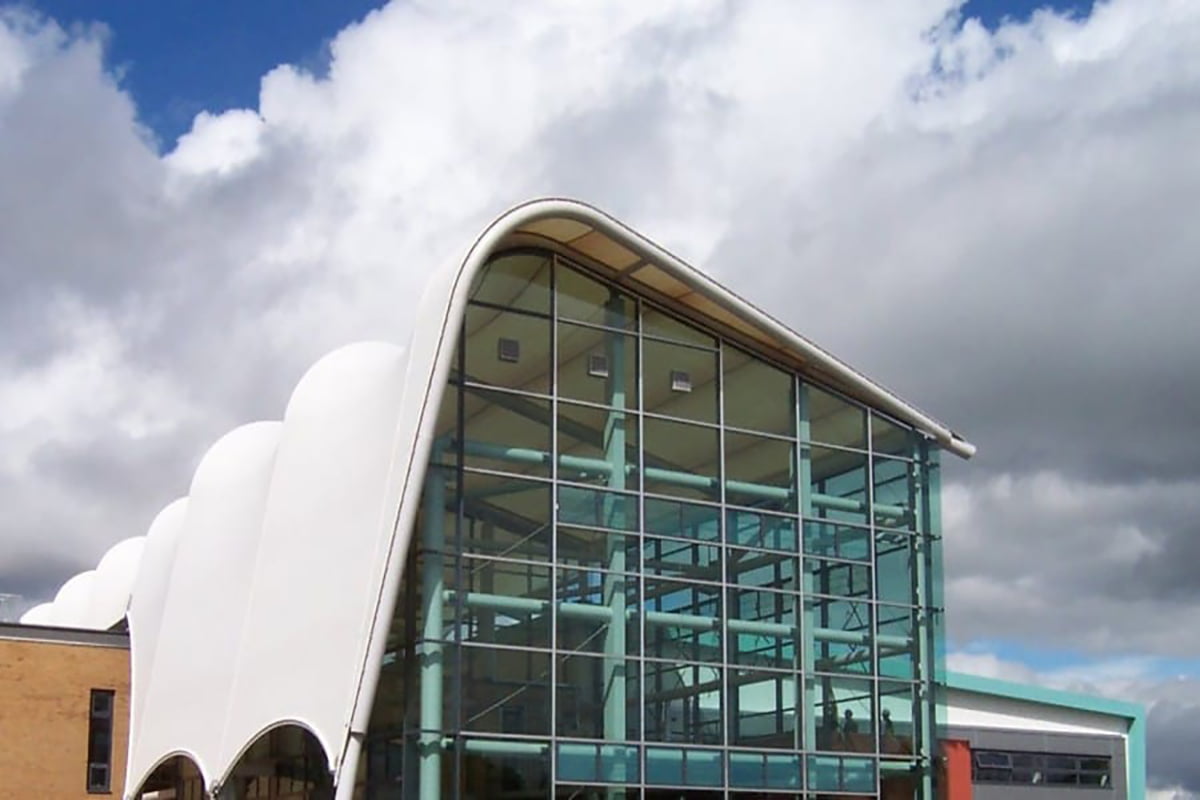Current Situation and Solution: Comparing ETFE and Glass – Which is the Potential Choice for the Future Materials Industry?
In the modern building materials industry, the search for effective alternatives to traditional glass is becoming urgent. ETFE (ethylene-tetrafluoroethylene copolymer) is a highly translucent, extremely practical and economical fabric that is in high demand at the moment. When comparing ETFE to glass, both air-cushioned and single-layer ETFE weigh approximately 1% of the weight of glass, which provides significant economic benefits due to the significant reduction in supporting structural frames. With the ability to transmit up to 95% of natural light and weighing many times less than glass, ETFE is often used as an effective alternative material, and has grown rapidly as a mainstream building material since its invention and use in the aviation industry 30 years ago. ETFE roofing is created by extruding ETFE film to create a material that is corrosion resistant and durable over a wide temperature range, which can be used as a single layer or fabricated into air cushions supported by frames.
—
Technical Requirements Analysis & Solution Context
Glass, although a popular traditional building material, has significant limitations in modern architectural applications, especially for large-scale or complex-shaped buildings. These limitations include its heavy weight, brittleness, high cost of supporting structures, difficulty in creating curved shapes, and suboptimal control of temperature and light. There is a need for a material that can provide the transparency of glass but is also lighter, more flexible, more cost-effective, easier to maintain and repair, and safer in the event of fire or natural disasters. This context has prompted the development of advanced materials such as ETFE to meet the increasingly high standards of performance, sustainability, and aesthetics in the construction industry.
—
Technical Solutions
ETFE has established itself as a potential building material solution, offering many advantages over traditional glass.
Single-layer ETFE and its ability to replace thin glass
In its single-ply form, ETFE has been widely used around the world. Its lightweight nature and transparent, glass-like appearance make it a popular choice for installation on new or existing buildings. Single-ply ETFE roofs can be formed by stretching sheets of ETFE over framed panels (such as Camellia House in Nottingham) or by using a cable network to cover large spans without the need for intermediate steel framing (as used at Failsworth and Radclyffe schools). Single-ply ETFE provides minimal thermal insulation but maximum light transmission, so tends to be used to create internal or external areas, for example in UK schools to provide shelter from the rain in outdoor play and teaching spaces.
ETFE air cushion solution and outstanding advantages
Another standout option when comparing ETFE to glass is the use of single-layer ETFE flakes to form ETFE air cushions. By filling the cushions with air, ETFE air cushions become lightweight and insulating, and can be manufactured to any shape or size, limited only by wind or snow loads.
ETFE has a low flammability and self-extinguishing properties, demonstrating a high standard of health and fire safety. ETFE is also designed to help control and adapt to sunlight, with the ability to be printed (or fritted) in various patterns to reduce glare. In addition, by adding additional layers of ETFE to the air cushion (multi-layer ETFE air cushions), light transmission and heat gain can be controlled. Multi-layer ETFE air cushions can be made to order by combining offset printed ETFE layers together, thus achieving maximum light gain or light loss as required, creating a film that responds to environmental influences.
—
Results and Performance Evaluation
When comparing ETFE and glass, ETFE stands out as a superior material with many practical benefits:
- Lightweight: ETFE is very lightweight ($ \approx 1\% $ the mass of glass), requiring less structural support, reducing costs associated with steel or concrete supports.
- Flexible: Unlike brittle and rigid glass (which is only used as a flat sheet), ETFE is very flexible, malleable and can be stretched $200-300\%$ beyond its original size, allowing for the creation of a wide variety of complex architectural shapes (such as domes or circular roofs).
- Cost savings: ETFE construction costs are significantly lower than glass. Standard ETFE gaskets have a much better U-value (heat transfer coefficient) than triple glazing, and can be installed for approximately half the cost of high performance glass.
- Easy to maintain: Due to its self-cleaning properties, ETFE cushions do not attract dust and are easily cleaned by rain, reducing maintenance costs.
- Easy to repair: Unlike glass that requires replacing the entire panel when it cracks/breaks, an ETFE panel is made with multiple gaskets that can be repaired piecemeal. If one gasket is damaged, just remove and replace the single panel, saving time and money.
- Larger Size: The largest size of tempered glass panels is typically $4\text{m} \times 2\text{m}$, while air-filled ETFE cushions can reach $25\text{m} \times 3.5\text{m}$ or more, ideal for large projects requiring minimal joints and maximum aesthetic value.
- Fire Safety: ETFE is self-extinguishing, shrinking away from the fire, allowing fire and smoke to escape, without creating falling debris or toxic gases. The chemical properties of ETFE do not allow for combustion, and do not cause accidental explosions. This is the main reason why ETFE is used in many airports, train stations and public spaces around the world.
- Longevity and sustainability: With a lifespan of more than 30 years, ETFE is not affected by UV rays, weathering and environmental pollution, does not become brittle or discolored, affirming itself as a long-lasting and durable building material.
Notable projects using ETFE air cushions include the Allianz Arena football stadium in Munich (which is LED-lit and emits different colours due to Herzog & de Meuron design), the Olympic Water Cube arena in Beijing (PTW Architects design), and the Eden project in Cornwall, UK (Grimshaw Architects design), demonstrating the outstanding potential of ETFE in future architecture.
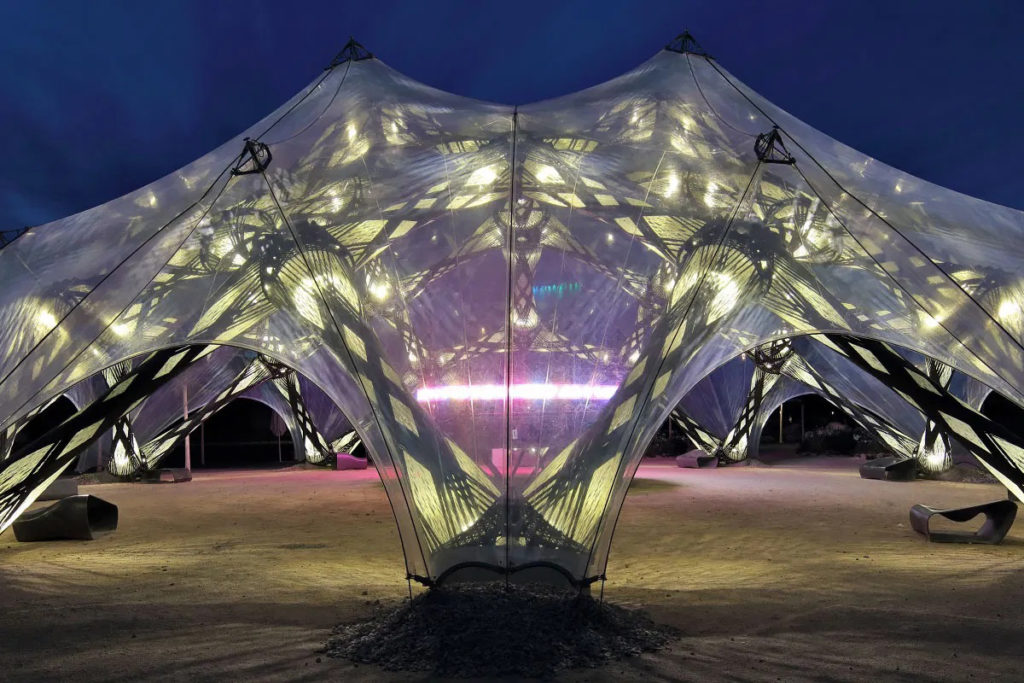
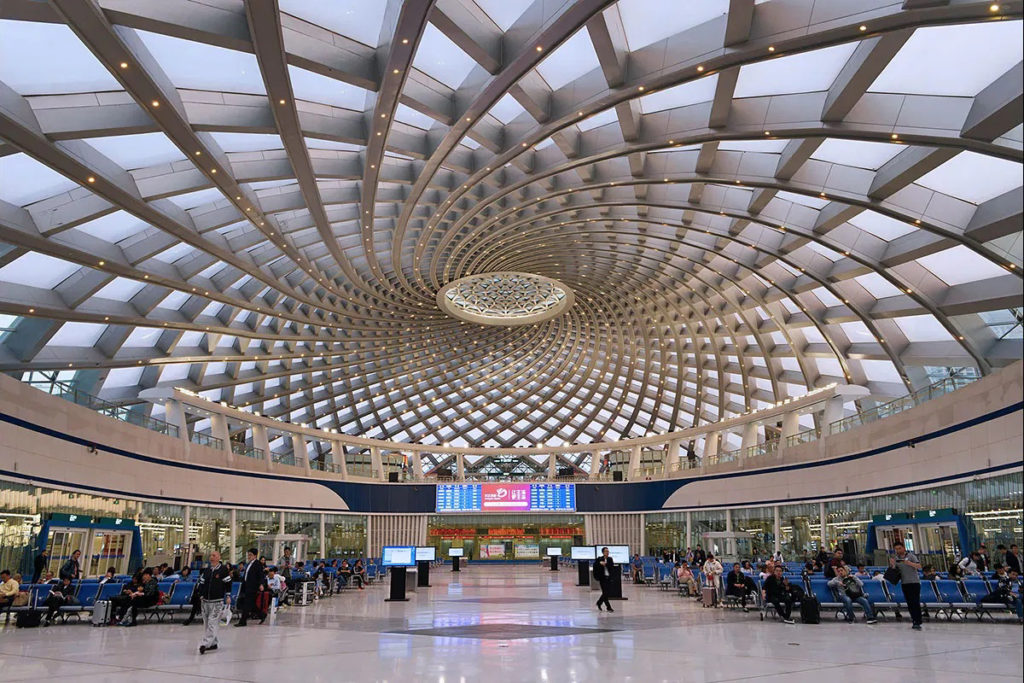
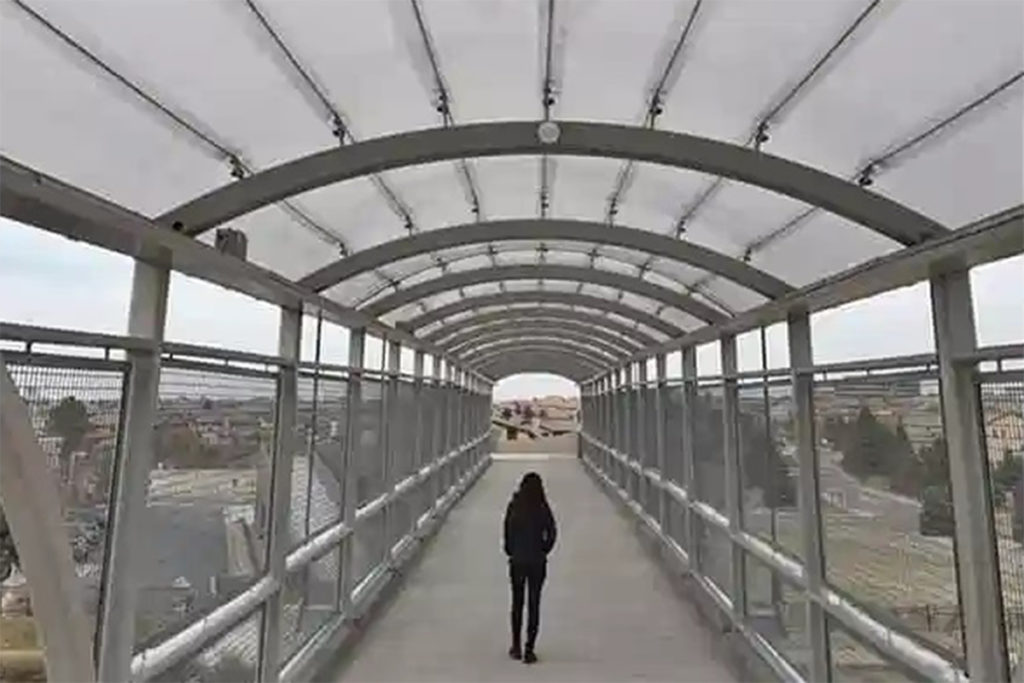
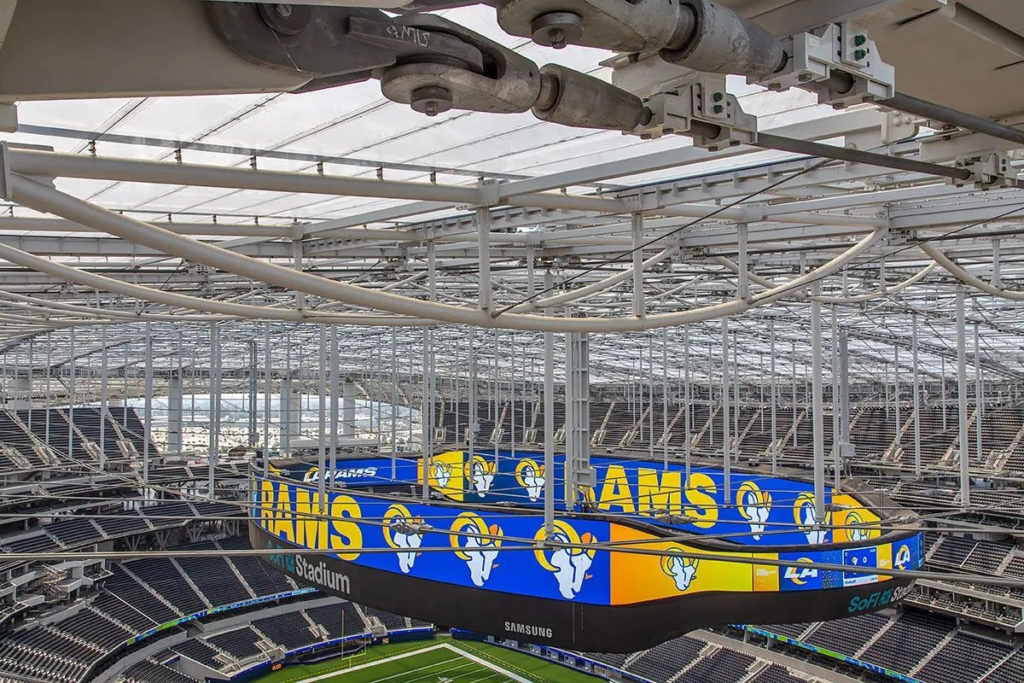
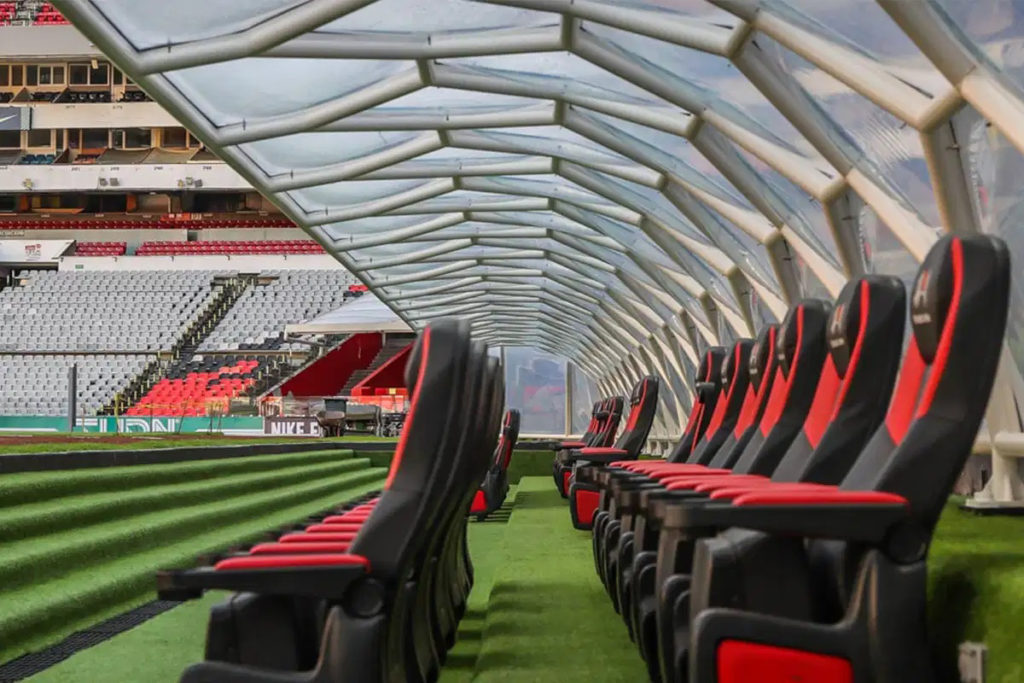
—
Contact Technical Consulting
Flexiiform is a professional Tensile Fabric design and construction company in Vietnam. With a team of well-trained and skilled Architects and Engineers, we are proud to be the only unit in Vietnam to receive professional advice from FasTech Company – The leading company in designing and constructing tensioned canvas structures in Thailand, with nearly 30 years of prestige and experience in the industry and successfully implementing more than 1,000 tensioned canvas projects in Thailand and Southeast Asia.
With the strength of creative ideas in tensile fabric architectural design, along with practical construction methods, Flexiiform is confident to bring the most optimal solutions for each specific project, especially projects related to tensile fabric cover structures and inverted umbrella roofs.
For expert advice on inverted umbrella solutions or to request a detailed quote, please contact us. You can read more related videos.
Contact information:
Company: Flexiiform
Phone: +84 8678 68830
Website: https://flexiiform.vn/
Fanpage: https://www.facebook.com/flexiiform/


